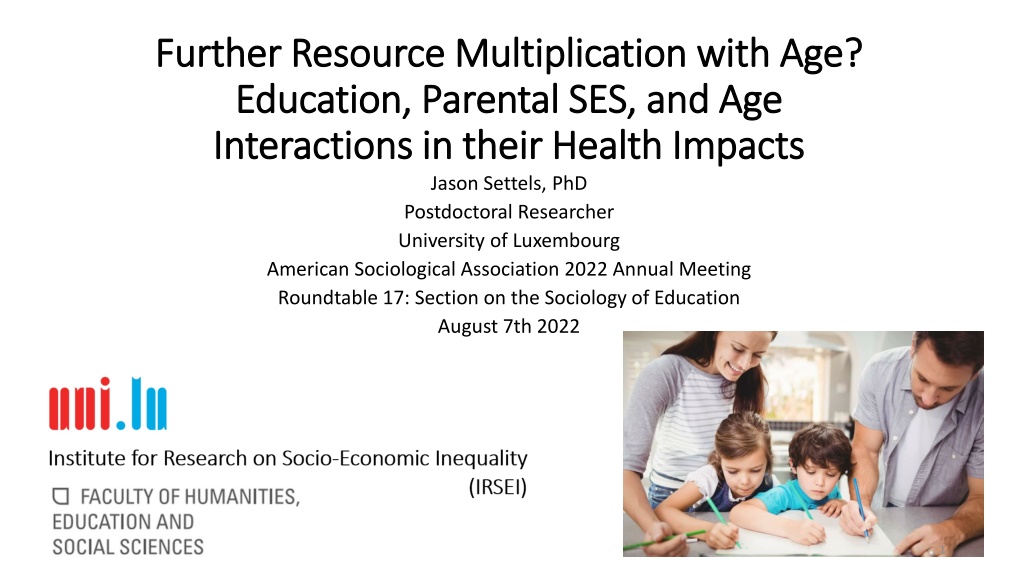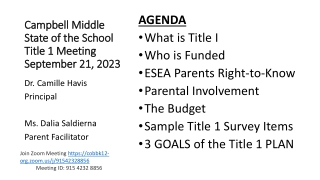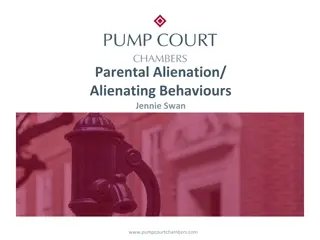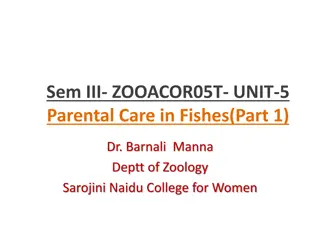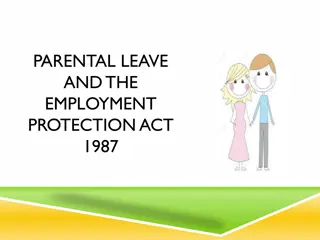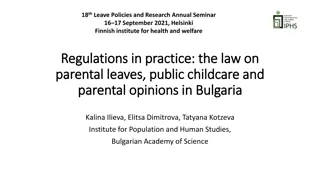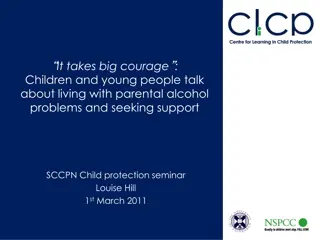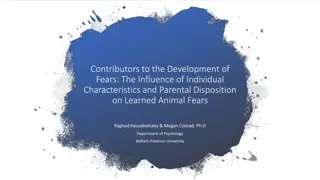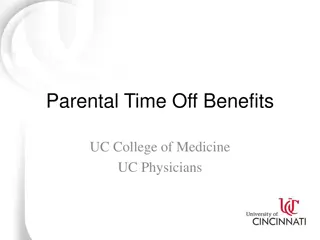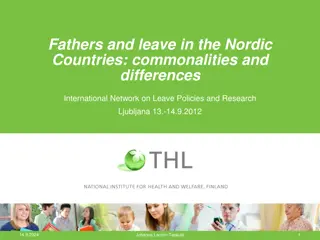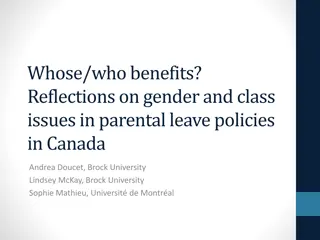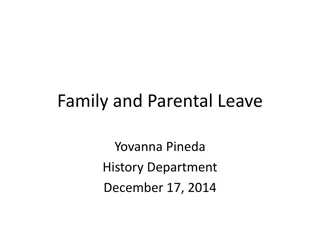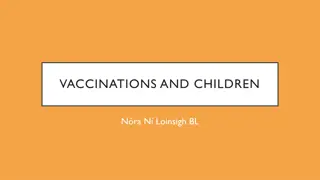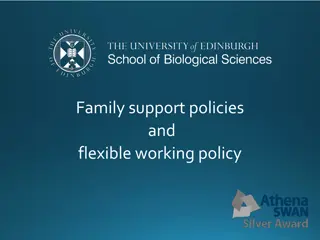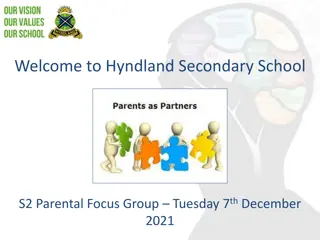Understanding Health Impacts of Education, Parental SES, and Age Interactions
This research explores the complex interplay of socioeconomic status, education, parental SES, and age in influencing health outcomes. Discussions on resource substitution vs. multiplication and how age moderates these dynamics are highlighted. Previous studies suggest age may play a role in the health impacts of education and SES, with varying effects based on gender. Theoretical perspectives on resource allocation shed light on disparities in self-rated health.
Download Presentation

Please find below an Image/Link to download the presentation.
The content on the website is provided AS IS for your information and personal use only. It may not be sold, licensed, or shared on other websites without obtaining consent from the author. Download presentation by click this link. If you encounter any issues during the download, it is possible that the publisher has removed the file from their server.
E N D
Presentation Transcript
Further Resource Multiplication with Age? Further Resource Multiplication with Age? Education, Parental SES, and Age Education, Parental SES, and Age Interactions in their Health Impacts Interactions in their Health Impacts Jason Settels, PhD Postdoctoral Researcher University of Luxembourg American Sociological Association 2022 Annual Meeting Roundtable 17: Section on the Sociology of Education August 7th 2022 1
Introduction Introduction The complexity of socioeconomic status (SES) (Dean and Platt, 2016), which potently affects almost all health conditions and creates fine-grained gradients in health (Scambler, 2012) Debate regarding whether higher amounts of one socioeconomic resource amplify (resource multiplication) or reduce (resource substitution) the health benefits of other socioeconomic resources (Andersson, 2016) Research has also addressed moderation by age (Andersson, 2016); cumulative (dis)advantage perspective (Ross and Mirowsky, 2011) 2
Theoretical Theoretical Perspectives Perspectives Resource substitution and multiplication (Ross and Mirowsky, 2006) The focus on education (Case and Deaton, 2020; Mirowsky and Ross, 2005) Resource substitution has received more support than resource multiplication Some analyses of self-rated health have revealed resource multiplication (Andersson, 2016; Bauldry, 2014; Delpierre et al. 2009; Farmer and Ferraro, 2005; Veenstra and Vanzella-Yang 2022; Zhang et al., 2020) Self-rated health s unique properties (Benyamini et al., 1999; DeSalvo et al., 2006; Idler and Benyamini, 1997; Quesnel Vall e, 2007) 3
Previous Previous Scholarship Scholarship A dearth of health studies have combined investigations of resource substitution and multiplication with analyses of moderation by age Andersson (2016) found resource multiplication as he investigated interactions between personal years of education and parental SES (an index of years of education and occupational prestige) in their impacts upon self-rated health Among women, age did not moderate this interaction Among men, concerning prediction of excellent health, more advanced age marginally significantly increased the magnitude of this interaction 4
Previous Previous Scholarship Scholarship The present study adds further nuance to Andersson (2016) Parental years of education and occupational prestige studied separately Reasons why the two might be distinct interactants with respondents education (see Hendricks and Schoellman, 2014; James, 2012) In similarity with Andersson (2016), further moderation by age is investigated This study also adds nuance to Andersson (2016) through assessing whether these interactions at least partly occur through mechanisms beyond actualized socioeconomic circumstances 5
Research Research Questions Questions 1) Do parental SES (education and occupational prestige, studied separately) and respondents education generate either resource substitution or resource multiplication in their impacts upon respondents self-rated health? 2) Are these dynamics reduced or amplified at more advanced ages? 3) Do respondents family incomes and occupational prestige fully account for these interactive relationships? 6
Methods Methods Dataset and Sample This study employed the 2016 and 2018 waves of the United States General Social Survey (GSS) To omit those less likely to have completed their education, those under 25 years of age and/or still in school were excluded To minimize selection biases based on differential probabilities of mortality, respondents over 80 years of age were excluded After further exclusion of those missing data within the dependent variables, the final analytical sample was 2,995 respondents 7
Methods Methods Variables Dependent variables Would you say your own health, in general, is excellent, good, fair, or poor? 1) excellent (accorded a score of 1 ) versus good/fair/poor ( 0 ) 2) excellent/good ( 1 ) versus fair/poor ( 0 ) 8
Methods Methods Independent variables Respondents ages, in years, divided by 10 Parental years of education, based on whomever of one s parents was the most educated Parental occupational prestige (threshold method), based on whomever of one s parents had the highest occupational prestige Respondents years of education 9
Methods Methods Control variables Gender Race (White, Black, other) Marital status (married, widowed, separated/divorced, never married) Parental status (no children, one child, two children, three or more children) Respondents workforce status (working full-time, working part-time, retired, unemployed or laid off, other) US region of residence (New England, Middle Atlantic, East North Central, West North Central, South Atlantic, East South Central, West South Central, Mountain, Pacific) Year of interview (2016, 2018) Further controls for respondents actualized socioeconomic circumstances Respondents total family incomes in the previous year, from all sources, before taxes Respondents occupational prestige (threshold method) 10
Methods Methods Analysis Four sets of logistic regressions: 1) Dependent variable: excellent versus good/fair/poor health Parental interactant: years of education 2) Dependent variable: excellent versus good/fair/poor health Parental interactant: occupational prestige 3) Dependent variable: excellent/good versus fair/poor health Parental interactant: years of education 4) Dependent variable: excellent/good versus fair/poor health Parental interactant: occupational prestige 11
Methods Methods First models: all independent and control variables, with no interactions Second models: add to first: the respective parental interactant*respondents education Third models: add to first: respondents education*respondents ages Fourth models: add to first: the respective parental interactant*respondents ages Fifth models: add to first: all three two-way interactions and the respective parental interactant*respondents education*respondents ages Sixth models: add to fifth the other parental socioeconomic measure Seventh models: add to sixth respondents total family incomes and occupational prestige 12
Methods Methods Continuous interactants were mean centered Missing data were addressed through multiple imputation using chained equations, ten imputed datasets The logistic regressions were weighted through the GSS WTSSALL standard sampling weight Standard errors were adjusted for clustering by region of the US All analyses employed the Stata 17 statistical software package 13
Results Results 14
Results Results 15
Discussion Discussion With an analytical sample of 2,995, the results are conservative, and only the most potent interactions reached statistical significance First research question: with dependent variables based on self-rated health, this study found resource multiplication The results differed between the two outcomes Andersson (2016) explained that self-ratings of excellent health are qualitatively distinct from variations among the less-than-excellent self-ratings 16
Discussion Discussion Explanations for the different findings between the two outcomes, based on differences between the two measures of parental SES (see Andersson, 2016; Bauldry, 2014; Hendricks and Schoellman, 2014; James, 2012; Pearlin et al., 1981; Spera et al., 2009) Second research question: both of these processes of resource multiplication were accentuated by age Suggesting cumulative (dis)avantage (Ross and Mirowsky, 2011) Third research question: the interactive effects here discussed remained statistically significant after controlling for The other parental SES measure Respondents total family incomes and occupational prestige 17
Discussion Discussion Mechanisms beyond respondents actualized socioeconomic conditions: The self-esteem and feelings of distinction engendered by having more education while coming from a well-educated family The education-based development of (Andersson, 2016; Ross and Mirowsky, 2006, 2011): Cognitive and problem-solving abilities Optimism Perseverance Healthy lifestyle habits Valuable personal connections providing social and emotional benefits 18
Thank You! jason.settels@uni.lu 19
References References Andersson MA (2016) Health returns to education by family socioeconomic origins, 1980 2008: Testing the importance of gender, cohort, and age. SSM - Population Health 2:549 560. Bauldry S (2014) Conditional health-related benefits of higher education: An assessment of compensatory versus accumulative mechanisms. Social Science and Medicine 111:94 100. Benyamini Y, Leventhal EA and Leventhal H (1999) Self-assessments of health: What do people know that predicts their mortality?. Research on aging 21(3):477-500. Case A and Deaton A (2020) Deaths of Despair and the Future of Capitalism. Princeton, NJ: Princeton University Press. Dean H and Platt L (Eds.) (2016) Social advantage and disadvantage. Oxford University Press. Delpierre C, Datta GD, Lang T and Berkman L (2009) Using self-rated health in epidemiological studies: a risk for underestimating the gap between social classes?. Journal of Epidemiology & Community Health 63:426 432. DeSalvo KB, Bloser N, Reynolds K, He J and Muntner P (2006) Mortality prediction with a single general self-rated health question. Journal of general internal medicine 21(3):267-275. Farmer MM and Ferraro KF (2005) Are racial disparities in health conditional on socioeconomic status?. Social Science and Medicine 60(1):191 204. Hendricks L and Schoellman T (2014) Student abilities during the expansion of US Education. Journal of Monetary Economics 63:19 36. Idler EL and Benyamini Y (1997) Self-rated health and mortality: a review of twenty-seven community studies. Journal of health and social behavior 38(1):21-37. 20
References References James L (2012) Education and Skills Policy for the Knowledge Economy: Insights from Territorial Innovation Models and Territorial Knowledge Dynamics. European Planning Studies 20(11):1803 1821. Mirowsky J and Ross CE (2005) Education, cumulative advantage, and health. Ageing International 30(1):27 62. Pearlin LI, Menaghan EG, Lieberman MA and Mullan JT (1981) The stress process. Journal of Health and Social behavior:337-356. Quesnel Vall e A (2007) Self-rated health: caught in the crossfire of the quest for true health?. International Journal of Epidemiology 36(6):1161-1164. Ross CE and Mirowsky J (2006) Sex differences in the effect of education on depression: Resource multiplication or resource substitution?. Social Science and Medicine 63(5):1400 1413. Ross CE and Mirowsky J (2011) The interaction of personal and parental education on health. Social Science and Medicine 72(4):591 599. Scambler G (2012) Health inequalities. Sociology of Health and Illness 34(1):130 146. Veenstra G and Vanzella-Yang A (2022) Interactions between parental and personal socioeconomic resources and self-rated health: Adjudicating between the resource substitution and resource multiplication theories. Social Science & Medicine 292:1-6. Zhang Z, Solazzo A and Gorman BK (2020) Education and health: The joint role of gender and sexual identity. SSM - Population Health 12:1-11. 21
